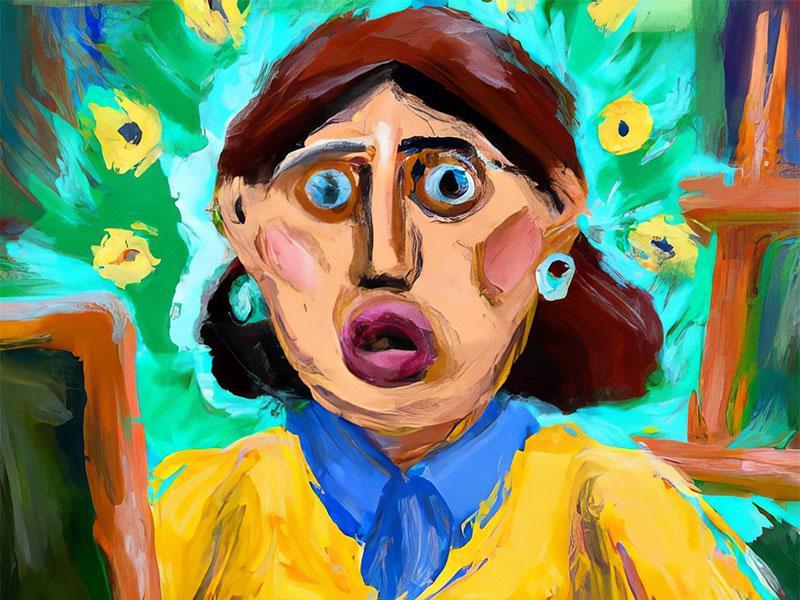2nd March 2023
Creating teaching materials is one of the most time-consuming things that teachers do. Finding a text on a specific topic can take ages. Even once you’ve found or written a text, you might then need to edit it to match the level of your students. Then you might go through the text to pick out useful vocabulary. You might even search for images to go along with the text. All that time could be better spent planning lessons, reflecting on teaching, or just watching HBO.
Until recently, there were few alternatives. If you didn’t want to use your coursebook, you had to either write, find or buy something else. But that has changed. OpenAI, better known as ChatGPT can write your teaching materials for you.
In this blog post, I’m going to share with you:
- What OpenAI is
- How you can use ChatGPT to create text-based materials for your classes
- How you can use OpenAI's DALL-E2 to create and edit images for your classes
What is OpenAI?
OpenAI is a research institute focused on developing safe and responsible artificial intelligence. The organization was founded in 2015 by a group of researchers and investors, including Elon Musk. Their goal was to advance the field of AI and ensure that it is used for the benefit of all humanity. ChatGPT (one part of OpenAI), is a conversational AI that generates human-like responses to text inputs. It uses machine learning algorithms to generate responses that are similar to those that a human might produce. OpenAI and ChatGPT can do lots of things that are useful for language teachers. It’s so good at writing texts, that it wrote several parts of this blog post. If you want to find out which parts, read to the end.
Using ChatGPT to create texts
One of the most powerful features of ChatGPT is its ability to process and generate natural language. This means that you can use ChatGPT to create text-based materials for your students, such as reading passages, gap fills, and vocabulary lists. You can use ChatGPT to generate a reading passage that is at the right level your students, and then use the generated text as the basis for a reading comprehension exercise. Similarly, you can use ChatGPT to generate gap fill exercises and vocabulary lists that are tailored to your students' needs and abilities. Below are ideas for how you could use ChatGPT to create text-based materials for your classes.
Select vocabulary to teach in class
ChatGPT can generate vocabulary lists. You can use these to decide what to teach in class. For example:
- ten common terms in business English: sales, marketing, finance, management, strategy, profit, investment, business plan, branding, customer service.
- vocabulary about the climate crisis: global warming, climate change, greenhouse gases, carbon emissions, sustainability, renewable energy, natural disasters, extreme weather, melting ice caps
- phrases for making polite requests: "Could you please help me with this?" "Do you think you could do me a favor?" "Could you possibly lend a hand with this?" "I was hoping you might be able to help me with this."
- animals that children keep as pets in the Saudi Arabia: dogs, cats, birds, fish, hamsters, guinea pigs, rabbits, snakes, lizards, and small monkeys.
You might not choose to use these ‘as is’, but this can be a quick way to get input on what to teach.
Write short texts with specific vocabulary
One of the big challenges with teaching vocabulary is putting it in context. Find a passage which includes some of the language you want to teach on a topic your students will find interesting is like looking for drop of water in an ocean of sand. Writing the text yourself can take too long. An alternative is to ask ChatGPT to use a vocabulary list to generate a text. Here are most of the terms above about business in a text about how Covid 19 has disrupted business:
The Covid 19 pandemic has had a significant impact on businesses around the world. Many businesses have had to temporarily or permanently shut down, leading to a decline in sales and profits. This has forced companies to reevaluate their marketing and branding strategies in order to remain competitive and attract customers. The pandemic has also affected businesses' ability to access funding and investment, which has made it difficult for some companies to continue operations. In response, many businesses have had to make changes to their management and staffing in order to stay afloat. Overall, the impact of Covid 19 on businesses has been significant and has forced many companies to adapt to new challenges and realities.
Creating gap fills
You can ask ChatGPT to take a text and turn it into a gap fill. Here is one based on the text above.
The Covid 19 pandemic has had a significant impact on _______ around the world. Many businesses have had to temporarily or permanently shut down, leading to a decline in _______ and _______. This has forced companies to reevaluate their _______ and _______ strategies in order to remain competitive and attract customers. The pandemic has also affected businesses' ability to access _______ and _______, which has made it difficult for some companies to continue operations. In response, many businesses have had to make changes to their _______ and staffing in order to stay afloat. Overall, the impact of Covid 19 on businesses has been significant and has forced many companies to adapt to new challenges and realities.
ChatGPT can also take a text or a gap fill and make it easier or harder.
Write short texts with specific grammar
Even more challenging than finding a text with specific vocabulary can be finding one with specific grammar. Here’s a text I generated by asking ChatGPT to include at least three examples of the past continuous in a short passage.
As the sun began to rise, Maria was walking down the main street of her town. She had been out all night, trying to clear her head after a difficult day at work. Suddenly, she heard a loud crash and turned to see a car had crashed into a lamppost. The driver was frantically trying to get out of the car, but the door was stuck. Maria ran over to help, but she could see that the driver was in shock and unable to move. She quickly called for an ambulance and stayed with the driver until help arrived.
Write reading comprehension questions
ChatGPT can also create reading comprehension questions. Here are five on the text above.
What was Maria doing as the sun rose?
What had Maria been doing all night?
What did Maria hear that caused her to turn around?
What was the driver of the car doing when Maria arrived?
What did Maria do to help the driver?
Dialogues
ChatGPT can write dialogues for you. For example, two people having a conversation about how expensive things are while sitting in a café.
A: "Can you believe how expensive this coffee is?"
B: "I know, right? Everything in this city is so overpriced."
A: "It's like they're trying to squeeze every last penny out of us."
B: "Yeah, and it's not just the coffee. Have you looked at the prices for rent or groceries around here?"
A: "I know, it's insane. I'm starting to think about moving somewhere else where things are more affordable."
B: "I hear you. I've been thinking the same thing. This city is great, but it's just not worth it if we can't even afford the basics."
A: "Yeah, it's definitely something to consider. Maybe we should start looking into some other options."
B: "Definitely. We can't keep living like this."
You can also use OpenAI to create images for these dialogues. Here’s an example of one for the text above. I’ll show you how to make these later.
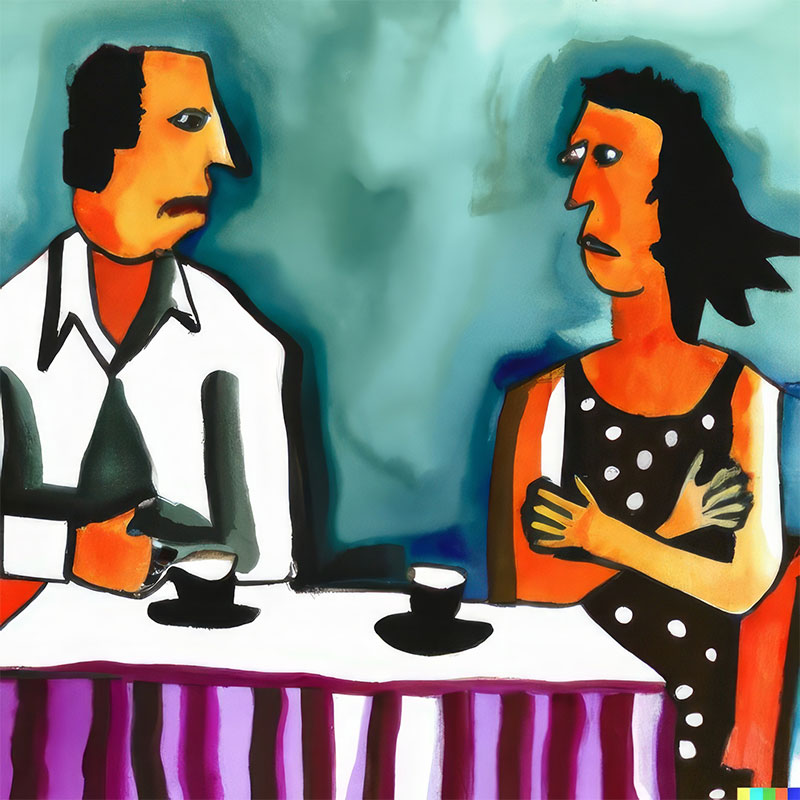
Email chains
ChatGPT can write emails and replies. For example, here is a complaint email to a restaurant. In class, students could write a reply (and then compare this to the reply from OpenAI).
Dear [Restaurant],
I recently visited your restaurant and was extremely disappointed with the food and service that I received. The dish that I ordered was overcooked and lacked flavor, and the server seemed uninterested and inattentive throughout my meal.
I have been a loyal customer of your restaurant for many years, and this is the first time that I have been so disappointed with my experience. I hope that you will take my feedback seriously and make improvements to ensure that future customers do not have the same negative experience.
Sincerely,
[Customer Name]
Other texts
ChatGPT could create:
- simple recipes using a list of ingredients provided by the teacher.
- song lyrics for a given topic.
- reviews of movies.
- premises for stories. Learners could then write a story based on the premise.
- short biographies of famous people.
- blurbs for books.
- just about anything you can think of.
Using DALL-E2 to create images
Finding photos or images for classes can be challenging. You might be teaching vocabulary that you don’t have images to go with. Or you might want to do a spot-the-difference activity with two similar but slightly different images. Taking your own photos or finding these online can take hours. Enter DALL·E2, which is part of OpenAI. DALL-E2 is a large language model that can generate images based on text descriptions. Below are ideas for how to create images and what to use these for in class.
Create visual aids
Teachers could use DALL·E2 to create visual aids for vocabulary lessons, such as images of objects or scenes that illustrate the meanings of new words. Type the words into DALL·E2 and tell it what kind of image you want. Here are some pets in a child’s bedroom.
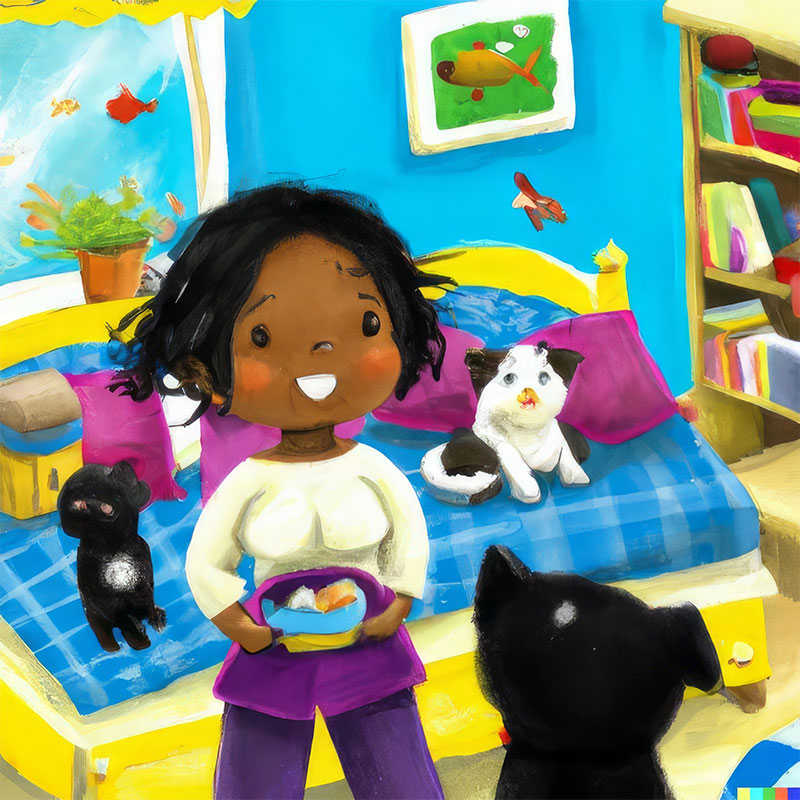
Writing and speaking prompts
Teachers could also use DALL·E2 to create prompts for writing or speaking activities, where students describe the images and practice using new vocabulary and grammar structures. Here’s an example of an image of a child’s bedroom. Teachers could use this to introduce language in context, or for a ‘describe and draw’ activity.
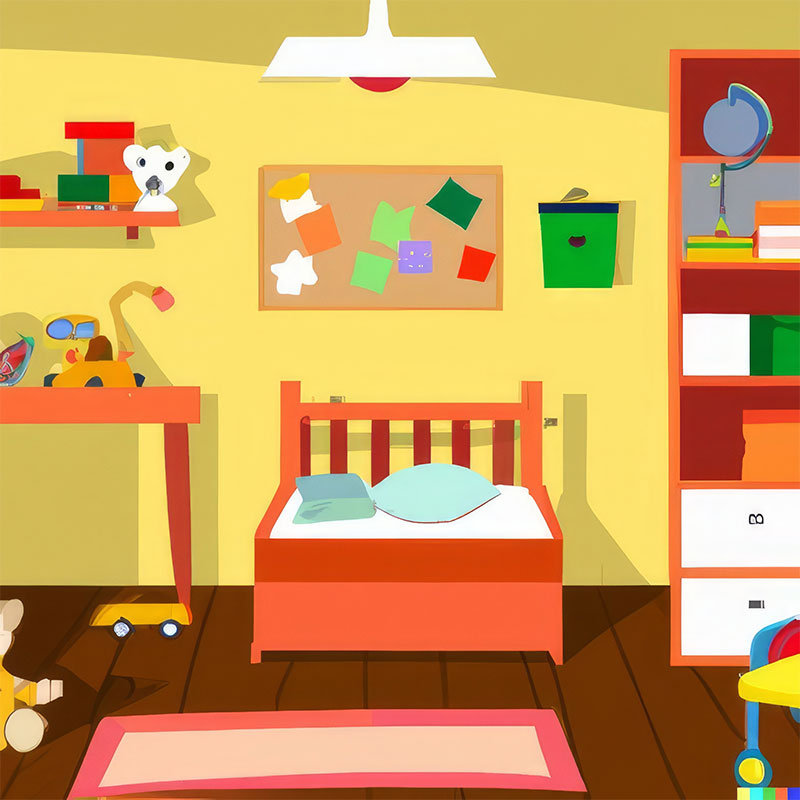
Starting point for discussions
Teachers could use DALL·E2 images as a starting point for discussions or debates, where students share their interpretations of the images and express their opinion. Here’s one I made about what the Earth will look like in the future if we fail to solve the climate crisis.
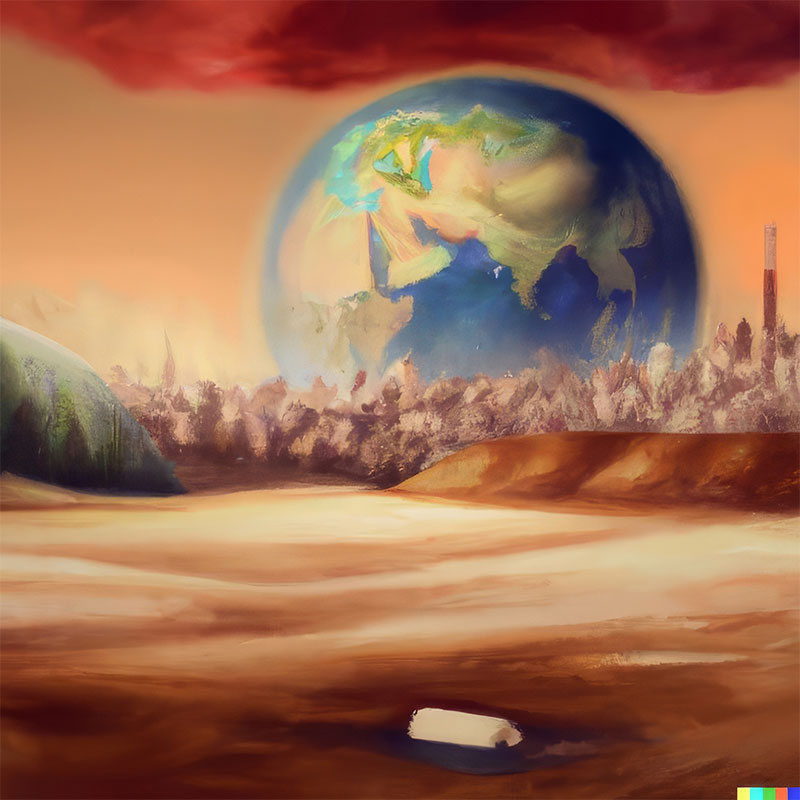
Images matching texts
Teachers could create images to go along with texts. They could then get students to use the image to predict what the text will be about. Here’s an image of a teacher using Open AI for the first time. This could be used with a text about using AI in education.
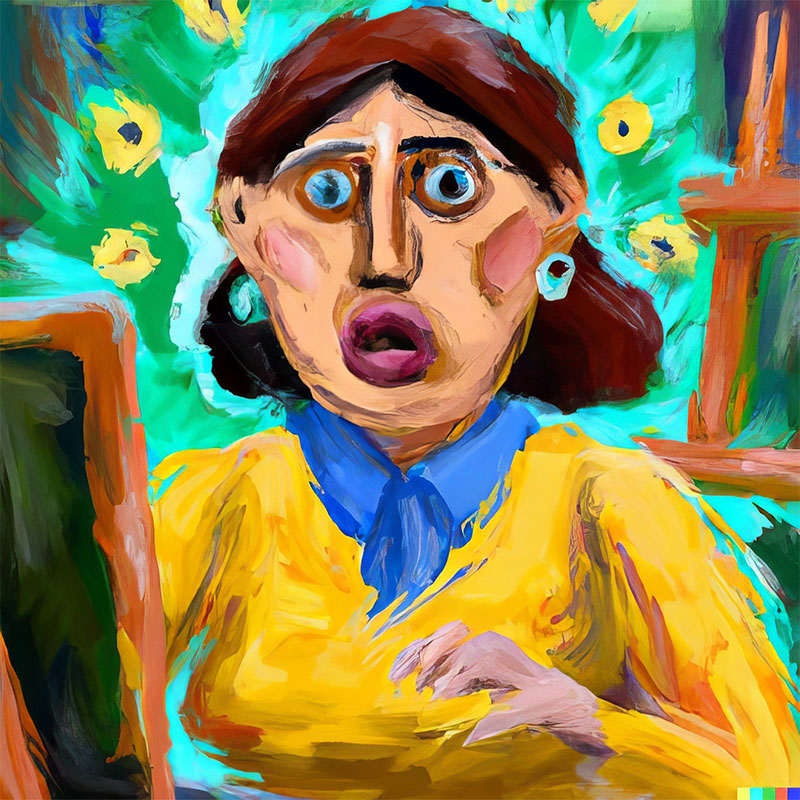
Don’t like that one? That’s okay, each time DALL·E2 creates four images. Here’s my second favourite.
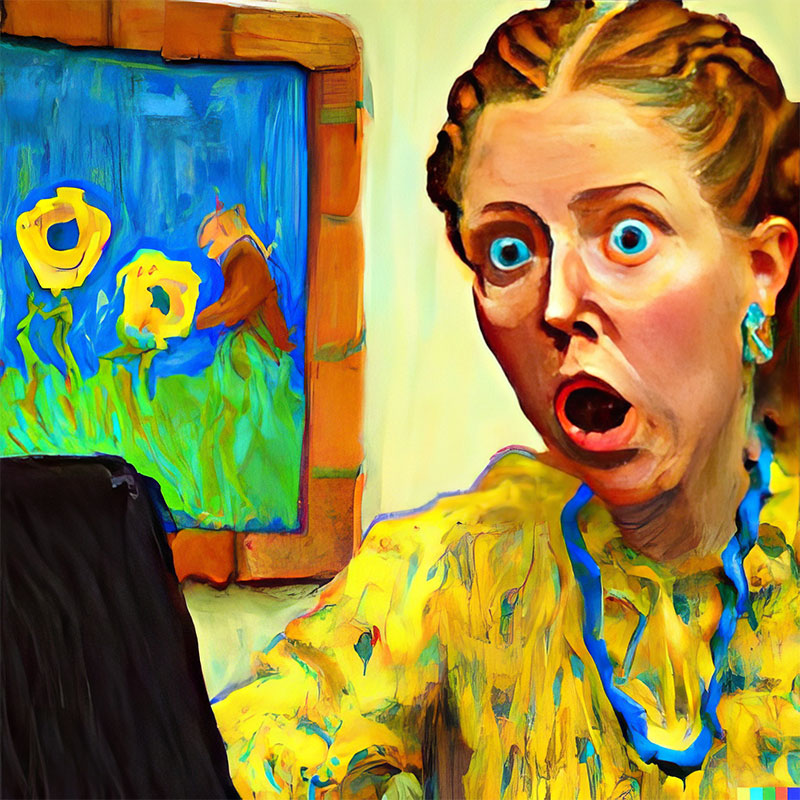
Spot-the-difference
Teachers can use DALL·E2 to create spot-the-difference images. There are several ways to do this. You could edit the real image using DALL·E2. Upload the photo and tell DALL·E2 which parts you want it to recreate. DALL·E2 will then fill in the blanks. Alternatively, upload half of a photo. Ask DALL·E2 to create the other half. Below is a spot-the-difference activity using a real photo. For this photo I deleted parts of the image (the trees and a few of the buildings)


Here’s another example. For this one, I uploaded half a photo and asked DALL·E2 to create the other half. The right side is the same, but there are several differences compared to the left.
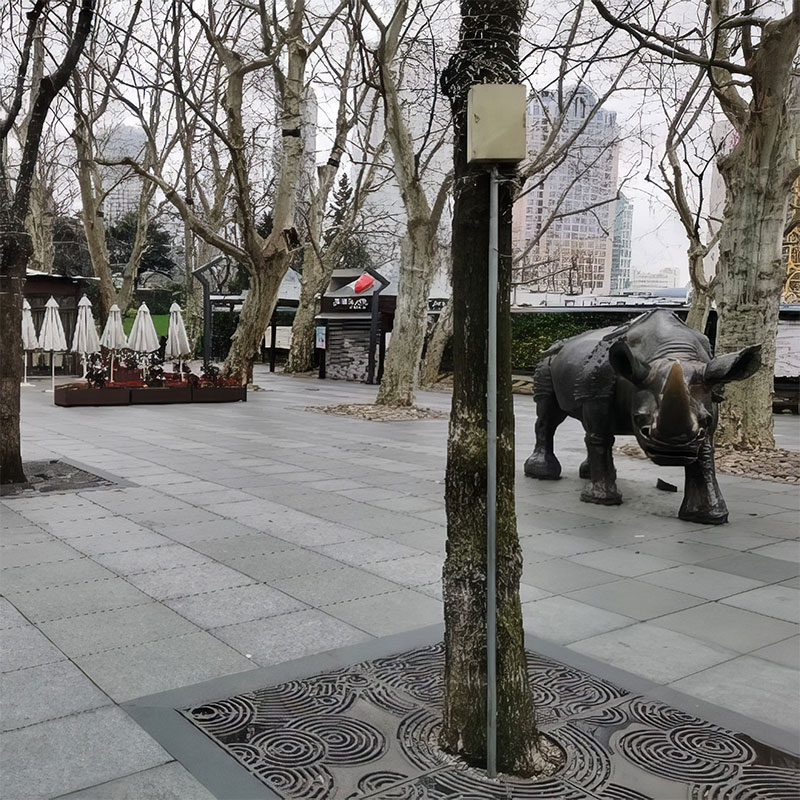

You could even use an image DALL·E2 created. Here is the bedroom image from earlier. This has now been changed to create a new spot-the-difference activity.
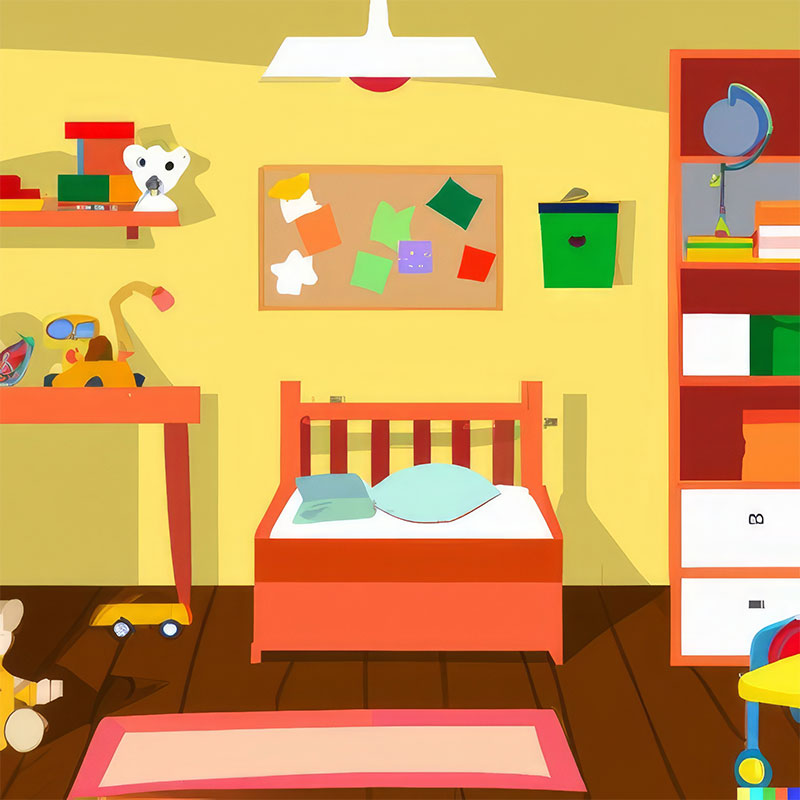
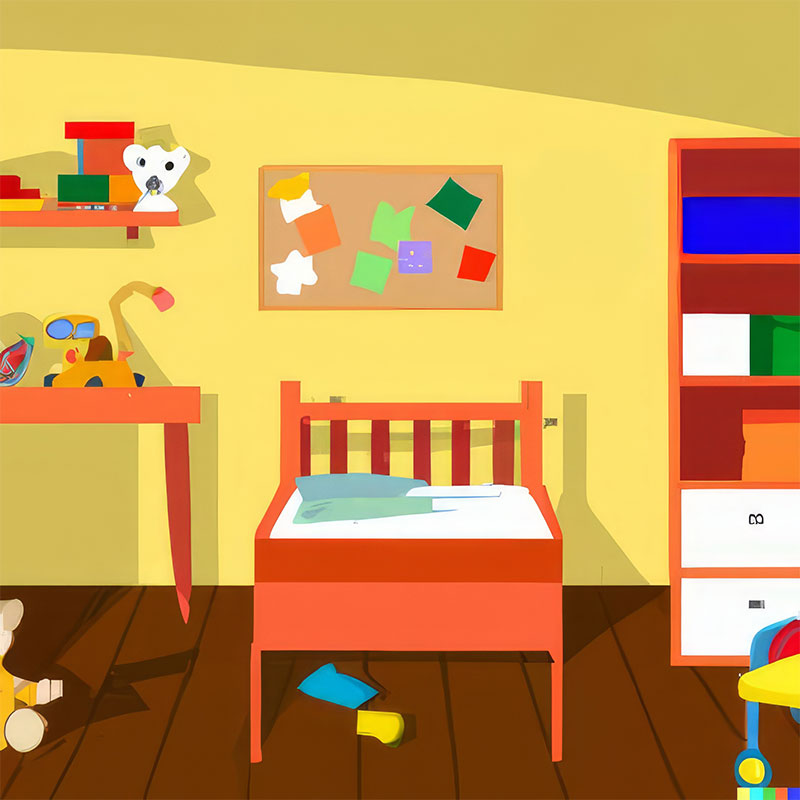
Use student descriptions
Teachers could also ask students to write their own descriptions of different images. These descriptions could then be given to DALL·E2. Students could look at the new images and decide which description matches the image DALL·E2 created.
Conclusions
ChatGPT and DALL·E2 are powerful tools that teachers can use to create engaging and effective materials for language classes. By using these technologies, teachers can easily generate a wide range of resources that can help their students practice language in class. Whether they are creating reading texts, vocabulary lists, or images for students to describe, teachers can use ChatGPT and DALL·E2 to create high-quality materials that can be used to engage and motivate students and save themselves hours every week.
Which parts of this blog did OpenAI write?
I said earlier that ChatGPT is so good, that I asked it to write some of this blog post for me. Which parts? As well as writing the example texts, ChatGPT wrote parts of the following paragraphs (with me editing):
- What is OpenAI?
- Using ChatGPT to create texts
- The information in the paragraph about using DALL·E 2 to create images
- Create visual aids
- Writing and speaking prompts
- Starting point for discussions
- Images matching texts
AI for Language Teaching
Master AI, save time and transform your TESOL teaching with our 30-hour course.


